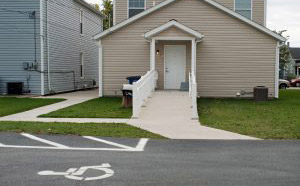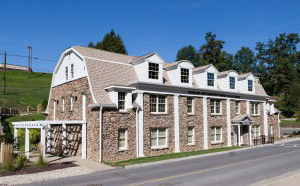INCREASE YOUR HOME’S VALUE WITH A NEW ROOF
November 25, 2019INSULATION BASICS
November 27, 2019The first thing you see when you approach a home is its outermost surface, usually brick or siding. You may be surprised to know that what you see is only the final element in the make up of the home’s exterior. While the brick or siding helps create an attractive outer finish for your home, and serves as its first line of defense against wind and rain, the materials underneath it ensure that your home stays safe and structurally sound for your family. So what’s the fun part? Deciding what your home will look like by choosing the type of exterior finish, types of doors, and the color of windows and trim.
How the Home’s Outer Shell Comes Together
Just as each component of the home’s exterior is important to its safety and comfort, so, too, is the order in which each component is installed. Though both walls and roofs are part of the exterior finishing process, we’ll focus only on walls in this article. Following is a discussion of the process of installing each piece of a home’s walls, presented in the order in which each is installed.
Wall Sheathing — Wall sheathing encloses the home and is the first thing that’s installed as part of the exterior. It strengthens the walls and allows water to drain away from the home. Two materials commonly used for wall sheathing are 1/2″ plywood and 1/2″ oriented strand board, or OSB. In some colder areas, where additional insulation is needed, 1/2″ rigid foam is used in combination with the sheathing material.
Drainage Plane — For better drainage, the wall sheathing can be taped at the seams, wrapped with an additional material — or both. When the home is wrapped, a layer of building paper or house wrap is added to create a continuous drainage plane. House wrap, a relatively new material, also allows moisture vapor to escape, helping to minimize mold and mildew growth.
Windows — To prevent water from leaking into the home through the openings around windows, many windows have plastic fins around the outside that repel water. But because windows are particularly susceptible to water leaks, a material called flashing should also be installed around the window opening. (The term flashing also refers to the practice of installing the material.) Two types of flashing material should be added around the window opening when the windows are being installed: flexible and rigid. The fins and flexible flashing create a continuous seal around the outside of the window, and the rigid flashing helps to direct water away from the opening between the window and the wall
Many windows are double-glazed to keep your home more comfortable. Double-glazed means the window glass is actually two panes with an air space between them. Windows also can be vinyl- or aluminum-clad on the outside to help reduce the amount of outdoor maintenance you have to do. For these windows, a specific color can be used in the manufacturing process that doesn’t fade with time or sun exposure, eliminating the need for painting.
Exterior Doors — Similar to windows, doors can have flexible and rigid flashing on all sides, to seal the exterior of the opening against water leaks and direct water away from the door. Exterior doors generally are reinforced with steel for security, and have some type of insulation inside them to keep your home comfortable.
Flashing Along Walls — In addition to the flashing around windows and doors, flashing is added at several other places along exterior walls to help direct water away from the home. When siding will be used, starter-strip flashing is added where the bottom course of the siding will meet the top of the foundation wall. For a brick or stone facade, masonry flashing is installed where the brick meets the top of the foundation wall.
Facade Materials — Facade materials protect the wooden wall sheathing from the direct impact of weather. They also give a home its own unique look. Vinyl siding and brick are two of the most common facade materials. Many facade materials today are engineered to be low-maintenance or maintenance-free for the homeowner. Brick facades also have weep holes, which enable water to drain from behind the brick to the outside.
Trim — Trim is added as the final step and adds the finishing touch to the outer appearance of the home. In many cases, trim can be ordered already painted with enamel.
The decisions you make about your home’s exterior will help keep your family safe and comfortable — and your home looking good. When discussing exterior finishes with your builder, ask the following:
- What type of shingles will be used on the roof and why?
- What type of windows will be installed in the home?
- Can I upgrade them to higher efficiency units?
- Do I have a choice as to what material will be used on the outer facade?
- Are there any neighborhood or community restrictions or requirements?
Staff Writter (2013 December) A Home’s Exterior Materials. Retrieved on December 27, 2013 From DIY.com
To find out how Tri-County Exteriors can improve your homes appearance click contact us.


